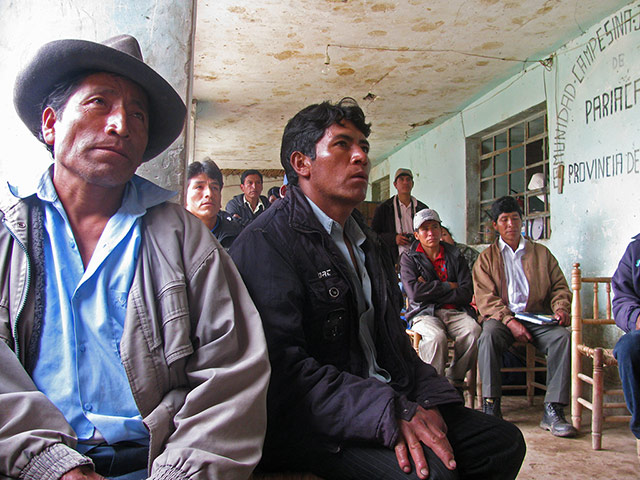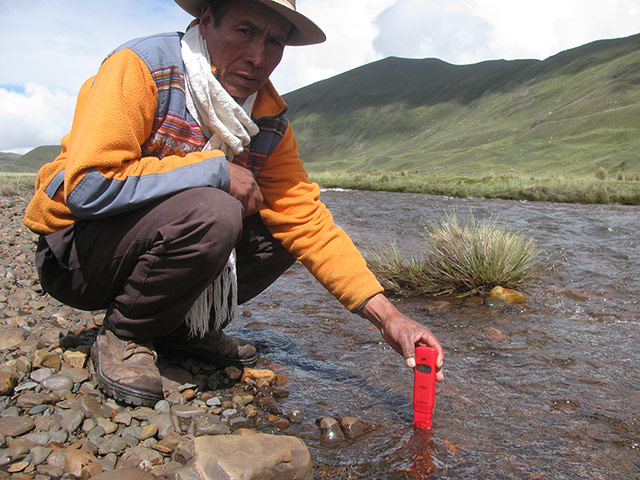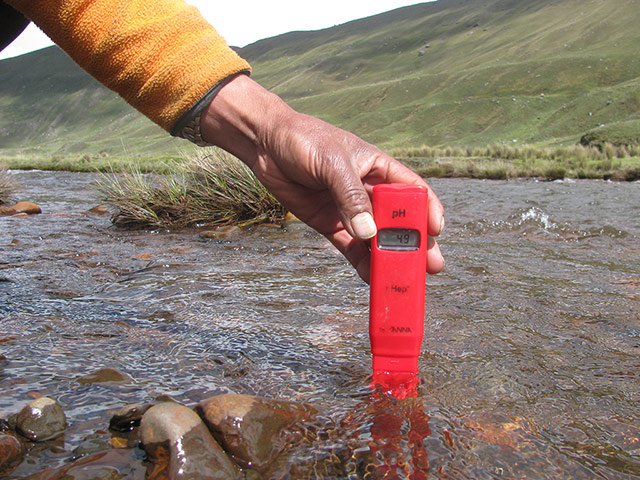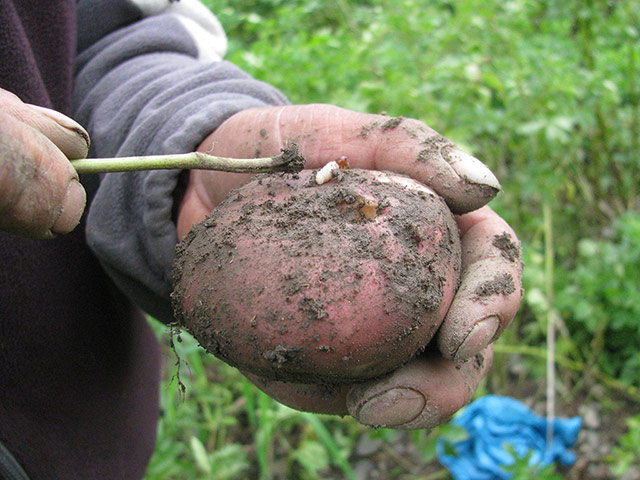Welcome to DU!
The truly grassroots left-of-center political community where regular people, not algorithms, drive the discussions and set the standards.
Join the community:
Create a free account
Support DU (and get rid of ads!):
Become a Star Member
Latest Breaking News
General Discussion
The DU Lounge
All Forums
Issue Forums
Culture Forums
Alliance Forums
Region Forums
Support Forums
Help & Search
Environment & Energy
Related: About this forumPeru Trying To Keep Up With GLOF Warning Systems; Water Acidifying, New Pests Appearing At Altitude

Villagers in Pariacaca watch a presentation about Peru’s first early warning system, which monitors glacial lake 513, located above their village. In 2010, they managed to escape a landslide precipitated by an ice avalanche into the lake because they had constructed tunnels to drain off extra water. As the glaciers melt, the excess meltwater will cause more floods in downstream villages such as Pariacaca. Now, with technical assistance from the University of Zurich and Swiss aid, the solar-powered early warning system allows them to sleep more easily at night

Farmer Alejandro Cruz measures the pH of the Black river, which is turning increasingly red due to acidic iron oxide deposits. An unexpected side-effect of the glacial retreat is the acidification of the meltwater, as the withdrawing ice exposes metal-rich rocks to the air for the first time in tens of thousands, or even millions, of years

After heavy rainfall, the pH reading of the river water stands at 4.9 (highly acidic, for water). Cruz and his farming community are working with scientists to use local plants to counteract the heavy metals in the meltwater. Certain plants have an 'extraordinary capacity to absorb metals', says Raul Loayza, an aquatic toxicologist at Lima’s Cayetano Heredia University. Cruz and his fellow farmers are beginning to tailor the existing highland wetlands – which act like slow-release sponges for glacial meltwater – to combat the deteriorating quality of the water as well as storing it

'We never used to have pests at 3,500 metres above sea level, but now that it’s warmer at this time of year, we do,' says Salvador. 'Some farmers are starting to use insecticide for the first time,' he adds. Farmers in the Cordillera Blanca are now learning about irrigation from farmers in the Cordillera Negra on the other side of the Santa valley. They are preparing for a time when there will be less water, both in quantity and quality after the glaciers have melted
EDIT
http://www.guardian.co.uk/global-development/gallery/2013/apr/12/peru-warnings-melting-glaciers-in-pictures
InfoView thread info, including edit history
TrashPut this thread in your Trash Can (My DU » Trash Can)
BookmarkAdd this thread to your Bookmarks (My DU » Bookmarks)
1 replies, 2144 views
ShareGet links to this post and/or share on social media
AlertAlert this post for a rule violation
PowersThere are no powers you can use on this post
EditCannot edit other people's posts
ReplyReply to this post
EditCannot edit other people's posts
Rec (2)
ReplyReply to this post
1 replies
 = new reply since forum marked as read
Highlight:
NoneDon't highlight anything
5 newestHighlight 5 most recent replies
= new reply since forum marked as read
Highlight:
NoneDon't highlight anything
5 newestHighlight 5 most recent replies
Peru Trying To Keep Up With GLOF Warning Systems; Water Acidifying, New Pests Appearing At Altitude (Original Post)
hatrack
Apr 2013
OP
M Kitt
(208 posts)1. Vested Petroleum interests ignore Climate Impact
Thanks for this post, Hatrack.
Vested Political interests put up a pretense, simply won't be convinced of "Climate Change" regardless of supporting evidence since admission of uncontrolled "Carbon Footprint" impact would lead to tightened restrictions, control of Corporate waste, related regulatory enforcement.
THAT would obviously disrupt their cash flow from the Petroleum Industry.
But supposing they'd pay attention to an objective, non-political 3rd party, NOAA disagrees with their conflicted, contrived public pronouncements of supposed "Climate Change Hoax".
http://www.pmel.noaa.gov/pubs/PDF/feel2899/feel2899.pdf